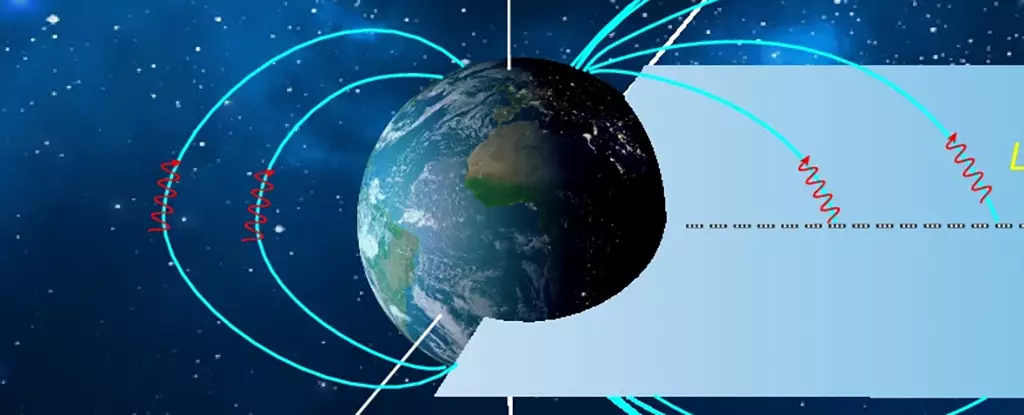In an intriguing turn of events, a collaborative group of international astronomers has recently unveiled the presence of enigmatic signals, dubbed chorus waves, emanating from regions of space previously deemed unexpected. These transient bursts of electromagnetic radiation, detected well beyond the familiar confines of Earth’s atmosphere, resemble the sound of birds chirping when rendered into auditory form. Chorus waves have been a subject of scientific inquiry for decades, long attributed to the instabilities of plasma—a state of matter consisting of ionized gases that can generate waves of electromagnetism. Their appearance and properties have fueled ongoing debates about the mechanisms underlying their formation and the role of the magnetic field in their generation.
Historically, researchers have monitored chorus waves at distances no further than 51,000 kilometers from Earth, a zone characterized by a relatively orderly magnetic field resembling the structure of a bar magnet. It was this orderly arrangement that scientists believed played a pivotal role in instigating the plasma fluctuations necessary for creating these electromagnetic signals. However, the latest findings have reshaped this narrative, revealing the existence of similar bursts at a staggering distance of 165,000 kilometers. This new location is marked by a significantly more chaotic magnetic field configuration, challenging our fundamental understanding of the conditions required for chorus wave formation. The implications are profound; it appears that these waves are not strictly dependent on an organized dipolar magnetic field, suggesting their ability to manifest in diverse environments across the universe.
The investigation, anchored in data acquired from the NASA Magnetospheric Multiscale (MMS) satellite mission launched in 2015, marks a significant leap in our knowledge about chorus waves and their generation. For the first time, researchers have observed the phenomenon known as electron cyclotron resonance in relation to these waves. This occurrence takes place in regions where electrons are notably scarce—termed electron holes—providing a previously unrecognized mechanism through which plasma particles transfer energy to the chorus waves. This crucial interaction serves to bolster the distinct chirping characteristics of the signals, a signature that can now be better understood as stemming from the synchronization of electron frequency and wave frequency. In essence, the observed correlations illuminate an intricate interplay between plasma dynamics and electromagnetic phenomena that was not previously recognized from our terrestrial vantage point.
The study of chorus waves is not merely an esoteric pursuit; these signals represent some of the most vigorous pulses of electromagnetic radiation detected in space. Their significance extends beyond academic curiosity; they are central to our understanding of Earth’s radiation belts and pose potential risks to satellite operations and space infrastructure. As we continuously integrate more observations from other celestial bodies—including Mars, Jupiter, and Saturn—we gain invaluable insights into the similarities and variances of cosmic magnetic environments. Astrophysical phenomena observed on distant planets can reflect fundamental physical processes that govern not only our own solar system but also the cosmos at large.
The recent revelations concerning chorus waves prompt a reassessment of long-held beliefs about the nuances of electromagnetic wave generation in space. As researchers continue to sift through the abundance of data provided by advanced observational missions, the knowledge garnered from these chirping signals has the potential to unravel longstanding questions regarding cosmic energy transport and the interactions between plasma and magnetic fields. Advancing our understanding of these phenomena is crucial, as they offer a broader framework for interpreting not just what occurs within our own solar system but also the fundamental workings of far-off planetary systems. As we chart the path ahead, it becomes increasingly clear that the study of chorus waves is a gateway to a deeper comprehension of the universe’s complexities, reminding us of the many mysteries yet to be explored.

